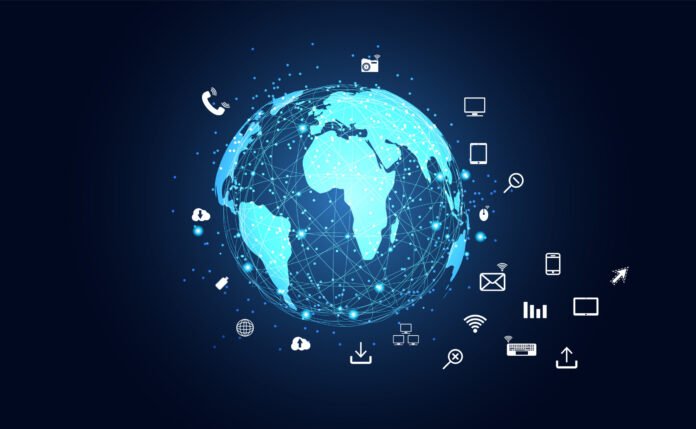The way we use and manage energy is evolving rapidly, thanks to the advances in Internet of Things (IoT) technology. From solar panels to smart meters, IoT devices are now commonplace in many homes and businesses. They allow us to monitor our energy consumption more closely, as well as make adjustments remotely. IoT is revolutionizing energy use and management, making it easier than ever before to reduce waste and save money. In this blog post, we’ll discuss some of the ways that IoT is changing the way we use and manage energy and how you can benefit from it.
What is IoT?
The Internet of Things, or IoT, is a system of interconnected devices and sensors that collect and share data about their surroundings. The data collected by IoT devices can be used to improve the efficiency of energy use and management.
IoT devices can be used to monitor energy consumption and identify areas where improvements can be made. For example, a sensor attached to an air conditioner could send data to a central database that tracks energy use. This information could be used to adjust the AC’s settings to reduce energy consumption.
IoT devices can also be used to control energy consumption. For example, a smart thermostat could be programmed to turn off the heat when no one is home. Alternatively, an IoT device could be used to automatically turn on lights when someone enters a room.
The possibilities for how IoT can be used to improve energy management are endless. As more devices become connected, the potential for reducing energy waste and saving money will only increase.
How is IoT being used in the energy sector?
IoT is playing an increasingly important role in the energy sector, as it enables new levels of visibility, control and automation throughout the energy value chain. From grid-edge devices to data center infrastructure, IoT is helping utilities and other energy companies to optimize performance, reduce costs and enable new business models.
Some of the key ways in which IoT is being used in the energy sector include:
1. Smart meters and grid-Edge devices: Smart meters are one of the most visible applications of IoT in the energy sector. By providing real-time data on electricity consumption, they allow utilities to manage demand more efficiently, while also giving consumers greater insights into their own usage patterns. In addition to smart meters, there are a growing number of other grid-edge devices that are being equipped with sensors and connected to the internet, including solar panels, wind turbines and battery storage systems.
2. Renewable energy management: IoT is also playing a big role in the growth of renewable energy sources such as solar and wind power. By connecting individual solar panels and wind turbines to the internet, operators can remotely monitor output and identify issues quickly. This helps to maximise efficiency and ensure that renewable energy sources are operating at peak performance.
3. Predictive maintenance: One of the biggest benefits of IoT is its ability to enable predictive maintenance for critical equipment such as generators and transformer stations. By constantly monitoring equipment for early signs of failure, operators can schedule repairs or replacements before problems
The benefits of using IoT in the energy sector
The benefits of using IoT in the energy sector are many and varied. Perhaps the most significant benefit is the ability to monitor and manage energy consumption in real-time. This means that businesses and households can make informed decisions about when and how to use energy, based on current conditions. This could lead to significant reductions in overall energy consumption, as well as associated costs.
Another key benefit of using IoT in the energy sector is the improved efficiency of energy production and distribution. For example, by monitoring energy demand in real-time, power plants can adjust their output to match actual demand, rather than operating at full capacity all the time (which is often the case). This could lead to considerable savings in terms of both money and energy.
Finally, IoT also has the potential to help us move towards a more sustainable future by enabling a shift from traditional energy sources to renewable ones. For example, by monitoring weather conditions and forecasted demand, solar and wind farms can adjust their output accordingly to maximise production when conditions are favourable. In this way, IoT can play a critical role in helping us transition to a more sustainable future.
The challenges of using IoT in the energy sector
The energy sector is under pressure to decarbonize, decentralize, and digitize. And the Internet of Things (IoT) has the potential to help with all of these challenges. But there are also some significant challenges to using IoT in the energy sector.
One challenge is that the energy sector is highly regulated. This means that any new technology or application has to meet a lot of requirements before it can be used. This can slow down the adoption of new technologies, including IoT.
Another challenge is that the energy sector is very complex. There are a lot of different stakeholders involved, from utility companies to government agencies to customers. This can make it difficult to develop and implement IoT applications that everyone agrees on and that will work across the different parts of the sector.
Finally, the energy sector is constantly changing. New technologies and business models are emerging all the time. This means that any IoT application has to be able to adapt as the sector changes.
Conclusion
IoT has revolutionized the way we use and manage energy, making it easier and more efficient than ever before. With IoT-enabled devices in homes, businesses, and even in the cloud, companies are able to monitor their energy usage in real-time and make changes to help reduce costs while still providing quality service to customers. IoT also makes it possible for people to share data with each other so that they can work together to find better ways of managing energy use on a larger scale. The potential of this technology is only beginning to be realized, but its impact on our lives will continue to be seen for many years into the future.
















